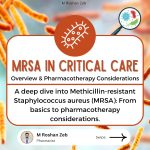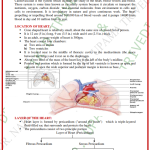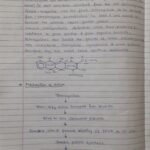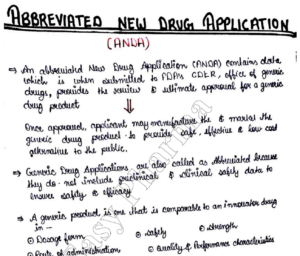REGULATORY REQUIREMENT
FOR PRODUCT APPROVAL
Therapies obtaining NDA, ANDA for generic drugs ways and
means of US registration for foreign drugs
Presented by: Submitted to:
Dipak Kumar Gupta Dr. Sanjula Baboota
M.Pharm(1st sem) Dept. of pharmaceutics
JAMIA HAMDARD
FDA OR USFDA
Definition
The United States Food and Drug Administration
is an agency within the U.S. Established for
Public Health and Service.
WAYS AND MEANS OF US REGISTRATION OF
FOREIGN DRUGS
• For decades, the regulation and control of new drugs in the
United States has been based on the New Drug Application
(NDA). Since 1938, every new drug has been the subject of
an approved NDA before U.S. commercialization. The NDA
application is the vehicle through which drug sponsors
formally propose that the FDA approve a new
pharmaceutical for sale and marketing in the U.S. The data
gathered during the animal studies and human clinical
trials of an Investigational New Drug (IND) become part of
the NDA.
• Source: https://www.fda.gov
INTRODUCTION
The FDA is led by the Commissioner of Food and Drugs,
who is appointed by the president and confirmed by the
Senate.
The Commissioner reports to the Secretary of Health and
Human Services.
The agency is headquartered in White Oak, Maryland
In 2008, the FDA started opening offices in foreign
countries, including China, India, Costa Rica, Belgium and
the United Kingdom.
What does FDA do?
FDA is responsible for:
Protecting the public health by assuring the safety, effectiveness
and security of human and veterinary drugs, vaccines and other
biological products, medical devices, nation’s food supply,
cosmetics, dietary supplements, and products that give off
radiation.
Regulation tobacco products.
Advancing the public health by helping to speed product
innovations.
Helping the public get the accurate, science-based information
they need to use medicines and foods to improve their health.
Organization
The FDA organization comprises of several offices and centers:
• Office of commissioner of food and drugs
• Center for biologics evaluation and research (CBER)
• Center for devices and radiological health (CDRH)
• Center for drug evaluation & research (CDER)
• Center for food safety
• Center for tobacco products
• Center for veterinary medicine
• Office of regulatory affairs
• National Center for toxicological research
Mission
The food and Drug Modernization Act states that the FDA
has 4 roles :
To promote health by reviewing research and approving
new products.
To ensure foods and drugs are safe and properly labelled.
To work with other nation to “reduce the burden of
regulation”.
To cooperate with scientific experts and consumers to
effectively carry out these obligations.
Parts of US FDA
1. Center for Drug Evaluation and Research (CDER)
2. Code of Federal Regulation (CFR)
3. Investigational New Drug Application (INDA)
4. New Drug Application (NDA)
5. Abbreviated New Drug Application (ANDA)
Center for Drug Evaluation and Research
(CDER)
CDER’s Responsibility
To ensure the availability of safe and effective
prescription, non-prescription and generic drugs
to the American people.
INVESTIGATIONAL NEW DRUG
APPLICATION (INDA)
• After successful performance of pre-clinical studies, the
investigator has to apply to FDA for permission to
administer unapproved drug product to human beings.
• Once the IND is submitted the sponsor must wait 30 days
before initiating any clinical trials
• During this time FDA will review the IND for safety to assure
that research subjects will not be subjected to unreasonable
risk.
NEW DRUG APPLICATION (NDA)
NDA is critical component of drug approval process
which required to submit to USFDA before drug
commercialization.
The data gathered during the animal studies &
human clinical trials of an investigational new
drug(IND) become a part of the NDA.
GOAL OF NDA
To provide enough information to permit FDA reviewer
to reach:
Safety
Efficiency
Quality for pharmaceutical production
Appropriate labeling
Methods used in manufacturing
NDA IS APPLICABLE TO:
New molecular entity
New salt of previously approved drugs
New formulation of previously approved drug
New combinations
New indication for already marketed drugs
NDA FORMS
FORM NO. CONTENT
Form FDA-356 h Application to market a new drug,
biologics ,an antibiotic drug for
human use
Form FDA-358 h Instructions
Form FDA-3397 User fee cover sheet
Form FDA-3331 New Drug Application Field Report
ASSEMBLING APPLICATION FOR
SUBMISSION:
FDA requires drug sponsors to submit multiple copies of the
NDA:
The Archival copy
The Review copy
The Field copy
DEFINITIONS:
1) The Archival copy:
It contains all sections of the NDA
Including the cover sheet
4 copies of the labeling section
3 additional copies of CMC(chemistry, manufacture,
control) & method of validation package
Should also contain case reports tabulation & case
report forms.
2)REVIEW COPY:
Includes the cover letter, form FDA-356h, the
administrative sections ,comprehensive NDA index,
individual table of contents, the labeling section &
the application summary.
Intended for reviewers in the corresponding
technical disciplines.
3)THE FIELD COPY:
It required since 1993 for use by FDA inspectors
during pre approval facilities inspections.
It includes cover letter, form FDA 356h, the
administrative sections, individual table of contents,
the labeling section, the application summary, CMC
& method of validation package.
NDA CONTENT:
Overall NDA index
Section 2 Labeling
Section 3 Application summary
Section 4 Chemistry, manufacturing and control (CMC)
Section 5 Non clinical pharmacology & toxicology
Section 6 Human pharmacokinetics & bioavailability
Section 7 Microbiology
Section 8 Clinical data
Section 9 Safety data
Section 10 statistical data
NDA CONTENTS:
Section 11 Case report tabulation
Section 12 Case report form
Section 13 Patient information
Section 14 Patient certification
Section 15 Establishment description
Section 16 Debarment certification
Section 17 Filed copy certification
Section 18 User free cover sheet(form FDA-3397)
Section 19 financial disclosure
Section 20 Other/pediatric use
FAST TRACK APPROVAL
Drugs For
Serious diseases
Fill an unmet medical need
Must be requested by the drug company
FDA -60 Days Review Decision
ACCELERATED APPROVAL
• In 1992 FDA instituted the Accelerated Approval
regulation
• Based on a surrogate endpoint, not on clinical outcome
A surrogate endpoint is a marker- a laboratory
measurement, or physical sign- that is used in clinical
trials as an indirect or substitute measurement that
represents a clinically meaningful outcome, such as
survival or symptom improvement.
PRIORITY REVIEW
• A priority review designation is given to drugs that offer
major advances in treatment.
• The goal for completing a priority review is six months.
• It can given for drugs use to serious/non-serious
diseases.
Abbreviated new drug application
(ANDA)
Generic drug application are called “abbreviated” once
approved, an applicant may manufacture and market the
generic drug product to provide a safe, effective, low cost.
INTRODUCTION
• The generic drug is a safe, effective and economical
substitute of a brand name drug product.
• The act which surrounds the generic drug approval
process of the USFDA is the “Hatch Waxman Act of 1984”
which we also identify by the “Drug price control and
Patent Term Restoration Act of 1984” which led to a
plethora of generic drugs entering into the market.
• Early before the passage of the act the pharmaceutical
market was ruled by the brand name drug manufacturers
which we also call as the innovators.
• The generic drug manufacturers seldom used to compete
with them and invest their funds for the already existing
brands in the market.
Generic Drug
Generic drug products must be bioequivalent with
respect to the Brand/Reference drug in terms of,
Active Pharmaceutical Ingredient(API)
Route of drug administration
Dosage form
Strength
Indication/Direction to use
Safety
ANDA Approval Process
NDA Vs ANDA Review Process
NDA Requirements ANDA Requirements
1. Chemistry 1. Chemistry
2. Manufacturing 2. Manufacturing
3. Controls 3. Controls
4. Labelling 4. Labelling
5. Testing 5. Testing
6. Animal Studies 6. Bioequivalence
7. Clinical Studies
8. Bioavailability
CONCLUSION
NDA ANDA
Applicable for new drugs Applicable for generic drugs
Take longer time (12-15 years) Compare to NDA less time taken (1-2
years)
More expenditure of money Comparatively less
Cost of drugs are more Cost of drugs are less
Nonclinical studies and clinical Nonclinical studies and clinical
investigations are essential investigations are nonessential except
bioavailability and bioequivalence
REFERENCES
1) https://www.fda.gov/
2)https://www.fda.gov/downloads/drugs/guidancecomplia
nceregulatoryinformation/guidances/ucm077097.pdf
3)https://www.fda.gov/drugs/developmentapprovalproces
s/howdrugsaredevelopedandapproved/approvalapplication
s/newdrugapplicationnda/default.htm










